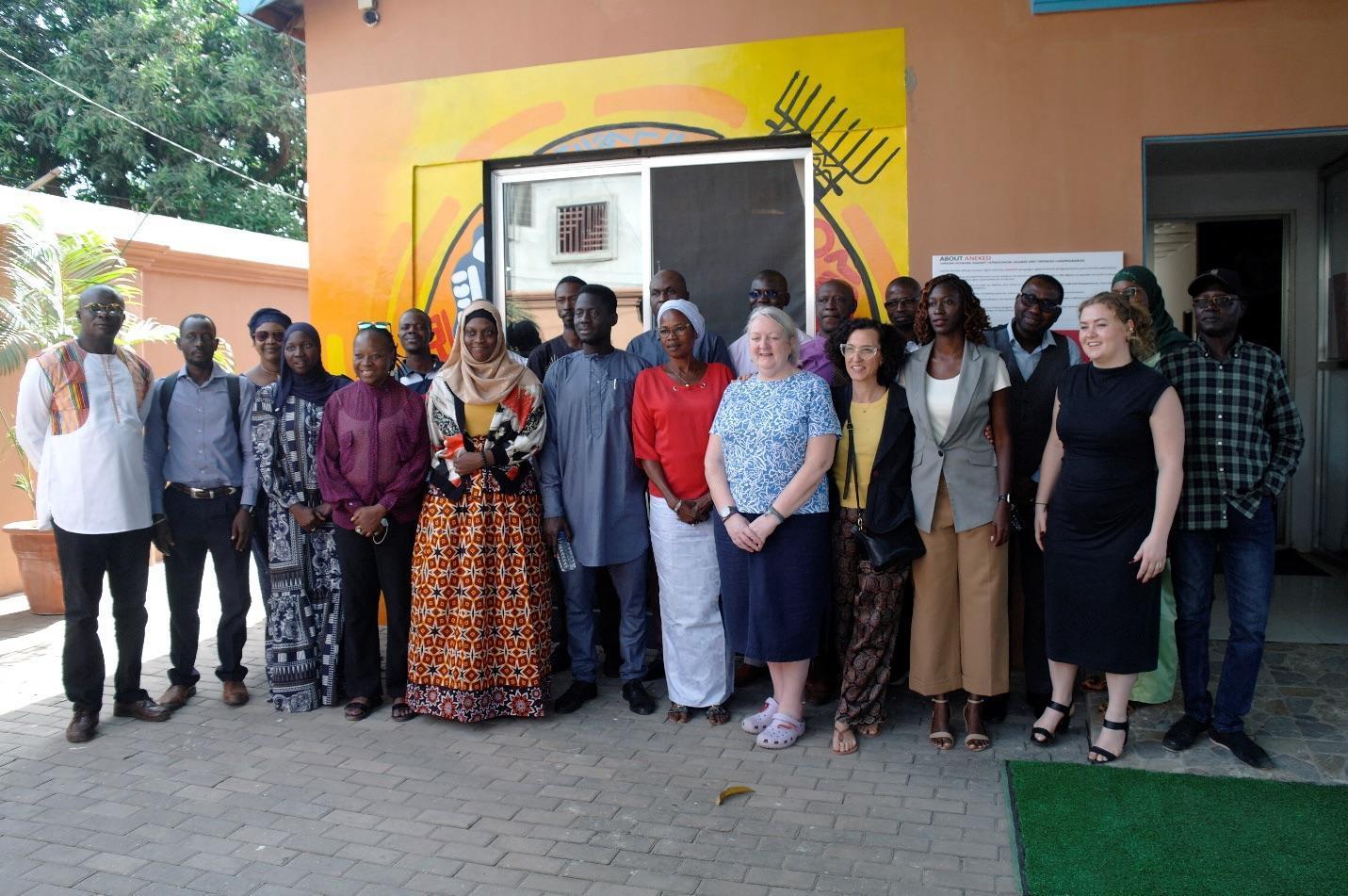
Africa-Press – Gambia. Members of the Steering Committee and Technical Committee for the implementation of the Post TRRC National Memorialization Framework currently on a weeklong training on Tuesday made a study tour to the Memory House located at Kanifing.
The visit, which was part of their ongoing training, has evoked fresh memories of the 22-year brutal rule of former dictator Yahya Jammeh, conjured up fears of his dictatorship and accentuated the Never Again Campaign.
The training was organized by the Ministry of Justice in collaboration with the International Coalition of Sites of Conscience (ICSC) with focus on implementing a coordinated victim-centred memorialization strategy.
At a time when victims of the Jammeh dictatorship are keenly awaiting the implementation of the TRRC recommendations, this visit served as a reminder of the dark days when fear ruled the country and it highlighted the urgency for the realization of the goals of the ‘Never Again’ campaign.
The Memory House is created to allow everyone to visit so that they can journey back into the Gambia’s dark days of brutal rule. The House was designed to preserve the stories of those who suffered under a brutal dictatorship between 1994 to 2017, and it is a place people can get “first-hand” accounts of history on human-centred connections between past, present, and future.” Memory House is also a place for resilience and it serves as a stark reminder of the days when fear ruled in The Gambia.
Gegê Leme Joseph, Senior Program Manager for Africa, Latin America, and the Caribbean for International Coalition of Sites of Conscience (ICSC) was at the head of the visiting team while Sirra Ndow, ANEKED Gambia Country Director provided a background to the House.
She explained that the Memory House dubbed A Site of Conscience is a place of memory, which can be a historic site, museum or a memorial centre that houses The Duty to Remember project.
“It is one of its kind in The Gambia that promotes justice and contributes to building a lasting culture of human rights and empathy in the country,” she added.
Madam Ndow further explained that The Duty To Remember is a memorialization project and permanent exhibition launched by ANEKED, noting that the project builds on the work of ANEKED and The Point newspaper in documenting the TRRC’s public hearings through the commission’s Digest project.
“And in line with ANEKED’s mandate are presented portraits of families/victims of enforced disappearances and extrajudicial killings,” she noted.
Memory House is divided into two sections, namely the exhibition and documentary units. The documentary unit is well arranged with seats for visitors to watch documentaries on a big screen. The exhibition unit is divided into three segments with a beautiful and well-kept courtyard that people can sit and relax when on a visit or research.
The Memory House houses portraits from the documentary photography project and series of small cases called the Gone, but not Forgotten Boxes. These include items of disappeared/murdered person such as clothes, and other objects that the victims’ families have in their possession.
“These are their properties which their families felt comfortable to share with the public. By so doing, it provides a space for mourning and reflection for the families and also reminds the public of the very often-forgotten humanity of those disappeared/killed,” added ANEKED boss.
That notwithstanding, members of the Post TRRC committees, who visited the Memory House on Tuesday, were overpowered with grief and confronted with chilling reality of history that has not yet been fully laid to rest. The sights of the past come alive at the House but with the emotion of never see shall we meet again, they walked through the exhibition and watched the documentaries on show. The old wounds reopened while the emphasis of ‘Never Again’ campaign and unwavering commitment to prevent the rise of dictatorship echoed throughout the House and the training centre.
For More News And Analysis About Gambia Follow Africa-Press





